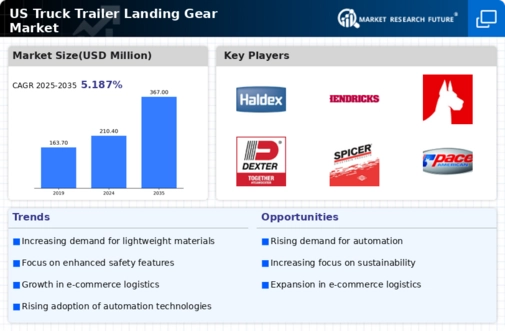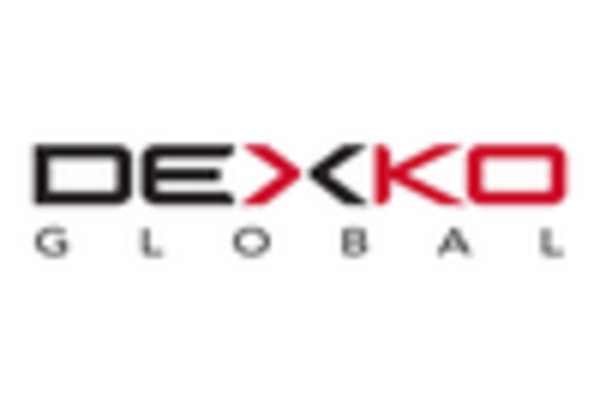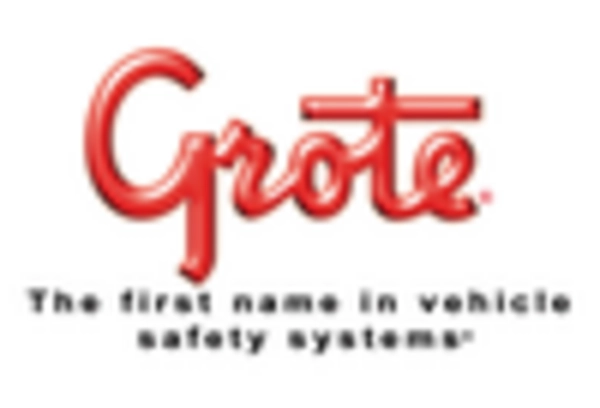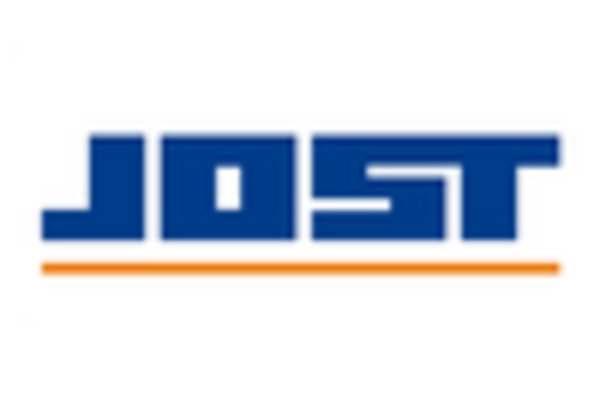Focus on Safety Standards
Safety remains a top priority in the trucking industry, driving advancements in the truck trailer-landing-gear market. Regulatory bodies and industry stakeholders emphasize the importance of adhering to stringent safety standards to minimize accidents and enhance operational efficiency. The implementation of safety regulations, such as the Federal Motor Carrier Safety Administration (FMCSA) guidelines, compels manufacturers to develop landing gear systems that meet or exceed these requirements. This focus on safety not only protects drivers and cargo but also reduces liability for trucking companies. As a result, the truck trailer-landing-gear market is likely to witness increased investments in research and development to create innovative solutions that enhance safety features, thereby fostering consumer confidence and market growth.
Growth of the Construction Sector
The construction sector's expansion in the United States has a direct impact on the truck trailer-landing-gear market. As infrastructure projects and residential developments increase, the demand for heavy-duty trailers and associated equipment rises correspondingly. This growth is supported by government initiatives aimed at improving infrastructure, which is projected to reach $1.5 trillion in spending by 2028. Consequently, the truck trailer-landing-gear market must respond to this demand by providing robust and durable landing gear solutions that can withstand the rigors of construction applications. The interplay between construction growth and the truck trailer-landing-gear market presents opportunities for manufacturers to innovate and capture a larger market share.
Rising Demand for Freight Transportation
The truck trailer-landing-gear market experiences a notable surge in demand due to the increasing need for freight transportation across the United States. As e-commerce continues to expand, logistics companies are investing heavily in their fleets to meet consumer expectations for timely deliveries. This trend is reflected in the projected growth of the freight transportation sector, which is expected to reach $1.1 trillion by 2026. Consequently, the demand for reliable and efficient landing gear systems becomes paramount, as they play a critical role in ensuring the stability and safety of trailers during loading and unloading operations. The truck trailer-landing-gear market must adapt to this growing demand by innovating and enhancing product offerings to cater to the evolving needs of the transportation sector.
Technological Integration in Manufacturing
The integration of advanced technologies in manufacturing processes significantly influences the truck trailer-landing-gear market. Automation, robotics, and smart manufacturing techniques are increasingly adopted to enhance production efficiency and product quality. This shift towards technological integration allows manufacturers to reduce production costs and improve lead times, which is crucial in a competitive market. Moreover, the incorporation of data analytics and IoT (Internet of Things) in landing gear systems enables real-time monitoring and predictive maintenance, thereby enhancing operational reliability. As the truck trailer-landing-gear market embraces these technological advancements, it is expected to see a transformation in product offerings, catering to the demands of modern logistics and transportation.
Shift Towards Electric and Alternative Fuel Vehicles
The transition towards electric and alternative fuel vehicles is reshaping the truck trailer-landing-gear market. As environmental concerns gain prominence, the trucking industry is increasingly adopting electric trucks and hybrid models, which necessitate the development of compatible landing gear systems. This shift is supported by federal incentives and state-level initiatives aimed at reducing carbon emissions, with projections indicating that electric vehicle sales could reach 30% of total vehicle sales by 2030. The truck trailer-landing-gear market must adapt to these changes by designing landing gear that accommodates the unique requirements of electric and alternative fuel vehicles, thereby ensuring compatibility and performance in a rapidly evolving market.

















Leave a Comment